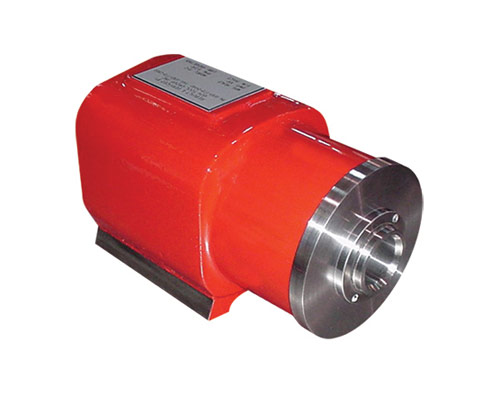ID Grinder Breakdowns: Common Causes & the Role of Quality Replacement Parts

A single ID grinder breakdown can cost manufacturers thousands of dollars in lost production time, rejected parts, and emergency repairs. For precision machining operations, these machines are the backbone of quality control—responsible for achieving the tight tolerances that separate acceptable parts from scrap. When an ID grinder fails unexpectedly, the ripple effects extend far beyond the machine floor, impacting delivery schedules, customer relationships, and profit margins.
The root cause of most ID grinder failures isn’t age or heavy use—it’s worn or low-quality components that gradually compromise performance until complete breakdown occurs. The solution lies in proactive maintenance using genuine, high-quality ID grinder replacement parts that restore machines to peak operating condition.
Common Causes of ID Grinder Breakdowns
Understanding what causes ID grinder failures helps manufacturers shift from reactive repairs to preventive maintenance strategies. Most breakdowns stem from predictable wear patterns in critical components.
Worn-out spindles and bearings represent the most common failure point in ID grinding operations. ID grinder spindles and bearings endure tremendous stress during high-speed grinding cycles. As these components wear, they introduce vibration and reduce grinding precision, ultimately leading to poor surface finishes and dimensional inaccuracies.
Damaged wheelheads or quills directly impact grinding accuracy and surface quality. These precision components maintain the grinding wheel’s position and control feed rates. When wheelheads develop wear or damage, the entire grinding process becomes unstable, resulting in inconsistent part quality.
Outdated or poorly maintained hydraulic/pneumatic parts create performance instability throughout the machine. These systems control critical functions like table movement, wheel dressing, and workpiece clamping. Component failure in these systems often triggers cascading problems across multiple machine functions.
Faulty coolant nozzles and hoses may seem minor, but they directly affect grinding quality and wheel life. Inadequate coolant flow leads to thermal damage, poor surface finishes, and accelerated wheel wear.
Electrical/mechanical component fatigue causes unexpected shutdowns when control boards, drives, or sensors fail. These failures often occur without warning, making them particularly disruptive to production schedules.
Negative Effects of Worn Parts on ID Grinders
The consequences of operating with worn components extend far beyond immediate repair costs, creating compounding problems that affect every aspect of manufacturing operations.
Loss of accuracy becomes evident through poor surface finishes and rejected parts. When precision grinder parts deteriorate, the machine can no longer maintain the tight tolerances required for quality production. This results in increased scrap rates and rework costs.
Increased downtime occurs as worn components fail more frequently, creating production delays and missed deadlines. Emergency repairs typically take longer than planned maintenance because replacement parts must be sourced quickly, often at premium prices.
Higher repair costs accumulate when small component replacements are neglected. A worn bearing that costs hundreds of dollars to replace can destroy a spindle that’s worth thousands if left unaddressed. Major overhauls become necessary when preventive maintenance is ignored.
Safety risks increase significantly as worn parts compromise machine stability and control. Mechanical failures can create dangerous operating conditions, potentially causing injury and exposing companies to liability issues.
How to Spot & Avoid Breakdowns
Early detection of component wear allows manufacturers to schedule maintenance during planned downtime rather than experiencing unexpected failures.
Key warning signs include unusual noise during operation, increased vibration levels, reduced grinding accuracy, and overheating in spindle or drive components. Operators familiar with their equipment can often detect these symptoms before complete failure occurs.
A preventive maintenance checklist should include regular inspection of spindle condition, bearing noise and temperature, hydraulic pressure levels, coolant flow rates, and electrical component performance. Documentation of these inspections helps identify trends that predict component failure.
The decision to repair versus replace depends on component condition, availability of grinder replacement parts, and cost comparison. Generally, critical components like spindles and wheelheads should be replaced rather than repaired when wear exceeds manufacturer specifications.
Beyond “Off-the-Shelf”: The Value of Genuine ID Grinder Parts
Generic or counterfeit parts often appear cost-effective initially but typically fail prematurely, leading to higher total cost of ownership. These parts may not meet original equipment specifications, creating compatibility issues and reduced performance.
GCH Tool Group provides ID grinder parts that meet or exceed OEM specifications, ensuring reliable performance and extended service life. With an extensive inventory of over 10,000 new parts and components for all grinder types and brands, including Cincinnati, Heald, Bryant, and Okamoto, GCH stocks genuine components for most leading ID grinder manufacturers. We can also produce custom ID grinder parts with minimal turnaround time.
The Remanufacturing Exchange Program
GCH Tool’s Remanufacturing Exchange Program minimizes downtime by providing immediate component availability on an exchange basis. This program allows manufacturers to continue production while their original components undergo professional remanufacturing.
The rigorous remanufacturing process uses only 100% new ID grinder parts, ensuring the final product meets “better than new” specifications. Precision hand-scraping performed by highly experienced experts, new bearings, and recoated spindles are standard manufacturing practices. All remanufactured components come with a warranty that exceeds OEM coverage.
The GCH Tools Advantage: Expertise & Availability
GCH maintains an extensive inventory of new, ready-to-ship grinder parts and ID grinder accessories in our 300,000-square-foot facility in Warren, Michigan. This includes more than 350 standard off-the-shelf grinder component assemblies, with competitive pricing at least 30% lower than OEM pricing.
Beyond parts supply, we are manufacturing partners rather than just suppliers, with the GCH Tool engineering team and customer service specialists providing expertise and support. Our global reach serves customers in 60+ countries, backed by more than 50 years of industry experience.
Don’t Let Downtime Win; Partner with GCH Tools for Quality ID Grinder Replacement Parts
ID grinder breakdowns are costly but preventable with genuine replacement parts and proactive maintenance strategies. The combination of quality ID grinder replacement parts and professional remanufacturing services provides a comprehensive solution for maintaining peak machine performance.
For anything from grinder wheelhead replacement to new ID grinder spindles and bearings to custom parts, contact GCH Tool Group today. Ask about GCH’s grinder parts and solutions and Remanufacturing Exchange Program

